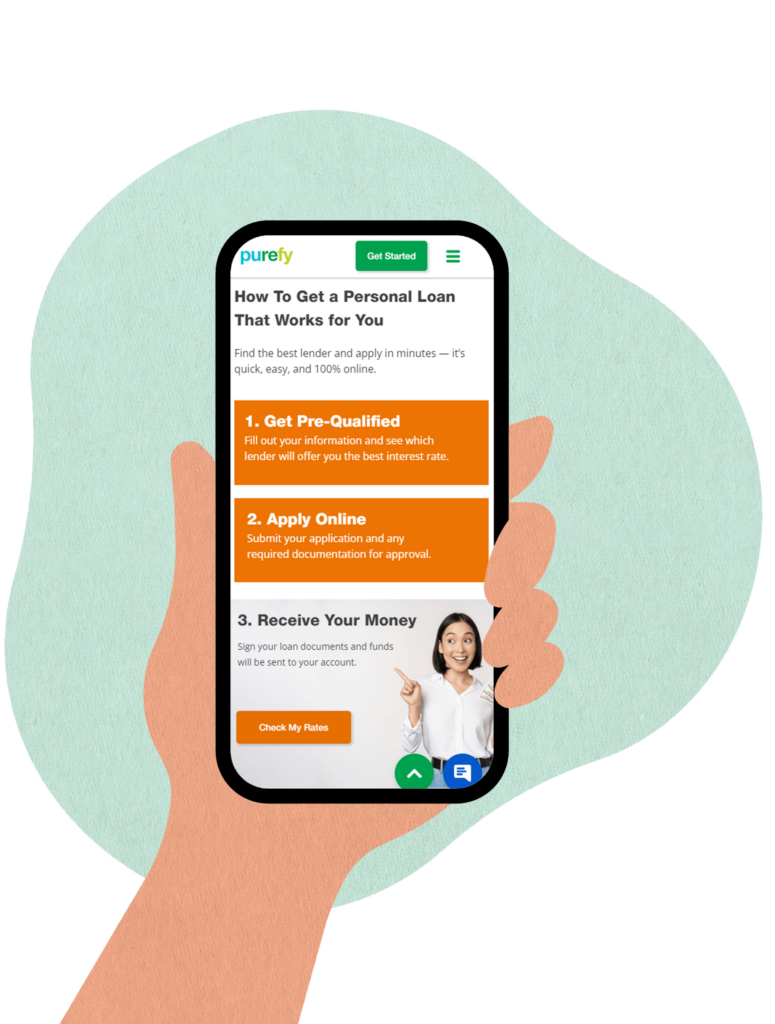Interest rates are on the rise as the Federal Reserve continues to hike its federal funds rate to combat high inflation. While the federal funds rate doesn’t directly affect your credit card’s annual percentage rate (APR), it does influence the prime rate, which credit card issuers use to determine APRs.
And because most credit cards have variable APRs, you’ve likely seen a significant increase over the past year. If you’re struggling to cope with rising credit card interest rates, or you want to minimize your costs as you work to pay down the debt, here are some ways you can accomplish your goal.
How to Consolidate and Pay Off Credit Card Debt
There are many approaches to paying down your credit card debt, but credit card debt consolidation is one of the most effective methods. If you have a good credit history, here are some options to consider.
Personal loans
Personal loans can be used for a variety of purposes, but one of the most popular uses is credit card debt consolidation.
How it works
When you get approved for a personal loan, you’ll typically get the money as a deposit into your bank account, which you can then use to pay off your credit card balances. Some lenders may even offer to pay off your credit cards directly.
Then, you’ll get a fixed repayment term, typically between one and seven years, and a fixed monthly payment.
Pros and cons
On average, personal loans charge lower interest rates than credit cards — 11.23% for a two-year loan compared to 20.40% for credit cards, according to the Federal Reserve. If you have great credit, you may even qualify for a rate in the single digits.
Additionally, personal loans have structured repayment terms, which can be helpful if you struggle with staying committed to your payoff plan with a low minimum monthly payment.
However, if you don’t have great credit, you may not qualify for an interest rate low enough to make it worth your while. And depending on the terms of the loan and how much you’re consolidating, the new monthly payment could put a strain on your budget.
When is a personal loan a good idea for credit card consolidation?
You may consider using a personal loan to consolidate your debt in the following situations:
- You have good or excellent credit
- You can afford a higher monthly payment
- You want a structured repayment plan
- You have a high credit utilization rate and want to lower it quickly
How to qualify for a debt consolidation loan
Many lenders offer personal loans to borrowers with a credit score of 600 or above, but the higher your credit score, the better your odds of getting a low interest rate.
Start by shopping around and comparing rate quotes from multiple lenders — you can get pre-qualified and compare rates with multiple lenders through Purefy’s rate comparison tool with no impact on your credit score.
Once you select the best offer, you’ll be directed to the lender’s website, where you’ll complete a full application and provide the necessary information and documents to get approved.
Credit Card Debt Piling Up?

Balance transfer credit cards
Another option for credit card debt consolidation is a balance transfer credit card. While this option can save you more money than a personal loan, it requires more diligence.
How it works
Balance transfer credit cards typically offer an introductory 0% APR promotion on balances transferred from another credit card. This promotional period can last anywhere from 12 to 21 months, depending on which card you choose.
If you pay down the balance during the introductory period, your only cost will be the balance transfer fee, which can range from 3% to 5% of the transfer amount. If you have a balance remaining at the end of the promotion, however, the card’s regular APR will apply to the remaining amount.
Pros and cons
Balance transfer credit cards can offer a lot of value with their 0% APR promotions. If you can make it work, you can save hundreds of dollars and pay no interest at all. Some of these cards may also offer other benefits, such as rewards, a 0% APR on purchases and more, giving you value beyond the balance transfer promotion.
However, you typically need good credit to get approved, and the amount you can transfer may be limited based on the new card’s credit limit. What’s more, the new card’s low minimum payment can make it easy to be complacent, which could come back to haunt you when the promotional period ends.
When is a balance transfer credit card a good idea for credit card consolidation?
A balance transfer credit card could be preferable to a personal loan in the following situations:
- You have good or excellent credit
- You want to maximize your savings
- You’re disciplined and can pay off all or most of the debt within the promotional period
- You want to take advantage of other benefits offered by balance transfer cards
How to qualify for a balance transfer credit card
Shop around and compare multiple balance transfer cards, focusing on the length of the promotional period, as well as other card benefits and features that are important to you. Then, apply directly with the card issuer offering the card of your choice.
You’ll typically need to provide a little information about yourself, but you may not need to share documentation. You may be able to request the balance transfer during the application process or after your account is approved.
Personal Loan Calculator
See how much your personal loan will cost in seconds. Enter your loan amount, interest rate, and repayment term to view your estimated monthly payment and total interest.
Results
$127
Monthly Payment
$3,210
Lifetime Interest
Want to find a low interest personal loan? Use our rate comparison tool to check multiple lenders in 2 minutes with no impact on credit.
Other tips for paying off credit card debt
While a debt consolidation loan or balance transfer credit card can make it easy to pay down your debt, those options aren’t available or appealing to everyone. Here are some other approaches you may consider.
Debt snowball method
If you have multiple credit cards with a balance, this approach suggests that you make the minimum payment on every card except for the card with the lowest balance. If you can put extra money toward your debt each month, apply it to that card.
Once that card is paid off, you’ll take the amount you were putting toward that debt — including the minimum and extra payment — and add it to the minimum payment on the card with the next-lowest balance. You’ll keep doing this with each card until all of your debt is paid off.
Debt avalanche method
This strategy works similarly to the debt snowball method, but instead of targeting accounts with the lowest balances first, you’ll focus on the accounts with the highest interest rates.
This approach can potentially save you more compared to the debt snowball method, but if you’re concerned about staying motivated and want quick wins early, the snowball method may be better for you.
Increase your income
If possible, consider ways to increase your income and apply the extra amount you earn toward your credit card debt. Potential ways to increase income include:
- Getting a second job
- Asking for overtime hours
- Starting a side hustle
- Turning a hobby into a small business
- Selling old and unused items
Lower other expenses
Take a look at your budget to see if you can cut back in certain areas and reallocate that money toward your credit card debt. You may even look into refinancing student loans and other debt to see if you can get a lower interest rate and monthly payment.
See if you can get a lower credit card interest rate
If you can’t get a personal loan or balance transfer card, consider how to lower credit card interest rates in other ways. For example, you may be able to contact your card issuer and request a lower rate for a certain period.
If your situation is dire, you could even look into credit counseling. With a credit counselor you can get on a debt management plan, which may also allow you to secure a lower interest rate and monthly payment.
How to find a personal loan for credit card consolidation
With Purefy, you can check personal loan rates with multiple lenders at once without harming your credit score. While many lenders let you do this through their website, it can be time-consuming to go through the process with each one individually.
As you compare your options, look at interest rates, repayment terms and other aspects of each offer. Also, watch out for origination fees, which can cost as much as 10% of the loan amount. If your credit is in great shape, you may be able to get a loan from a lender that doesn’t charge an upfront fee at all.
Once you’ve chosen an offer and you’re ready to apply, click through to the lender’s website and complete the application. You can generally expect to receive a decision within minutes. In some cases, the lender may ask for additional information or documentation to prove your identity and income.
After you are approved, most lenders will disburse funds within a day or two, though some may take longer. Whatever you do, make sure you read through the loan agreement before you sign it to ensure you know what you’re getting.
Outsmart Rising Credit Card Interest Rates With a Personal Loan
Credit card APRs often exceed 20%. Get your finances on the right track today with a quick & easy personal loan from our marketplace of top-rated lenders













